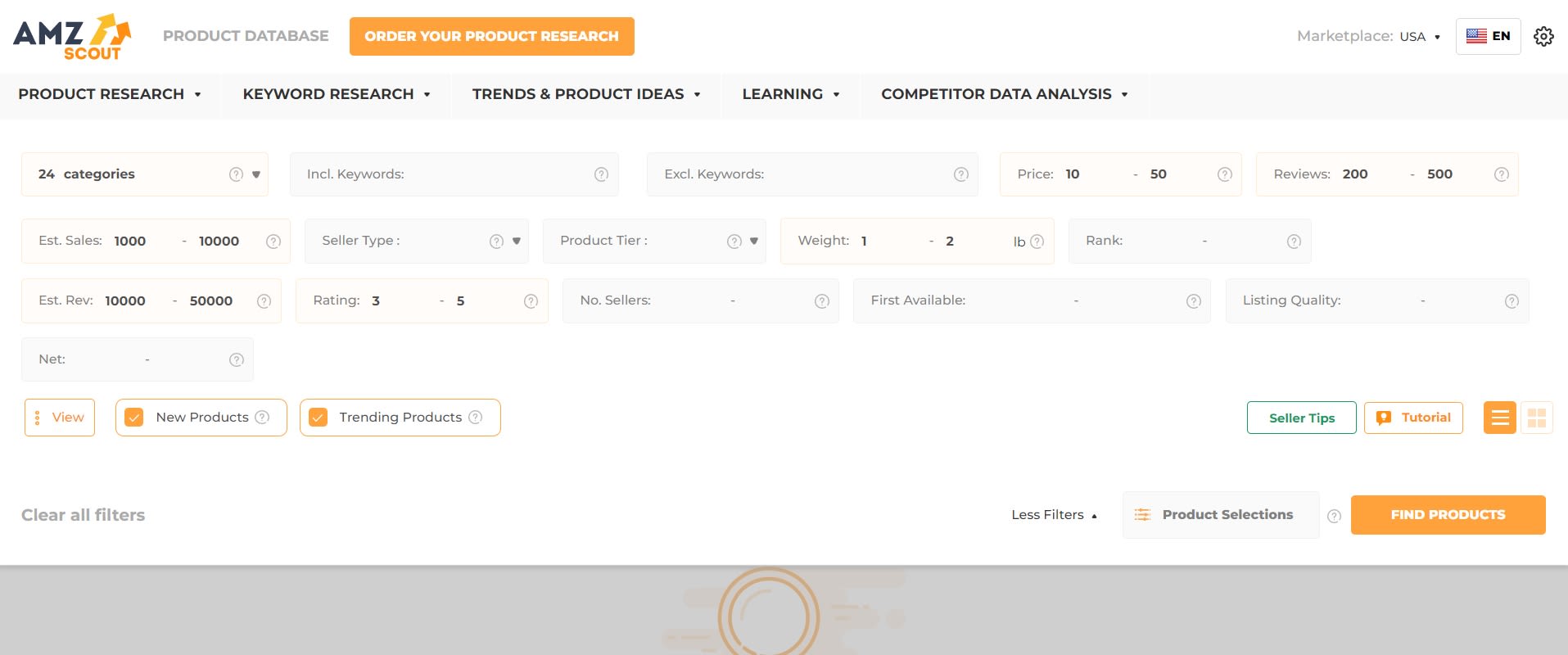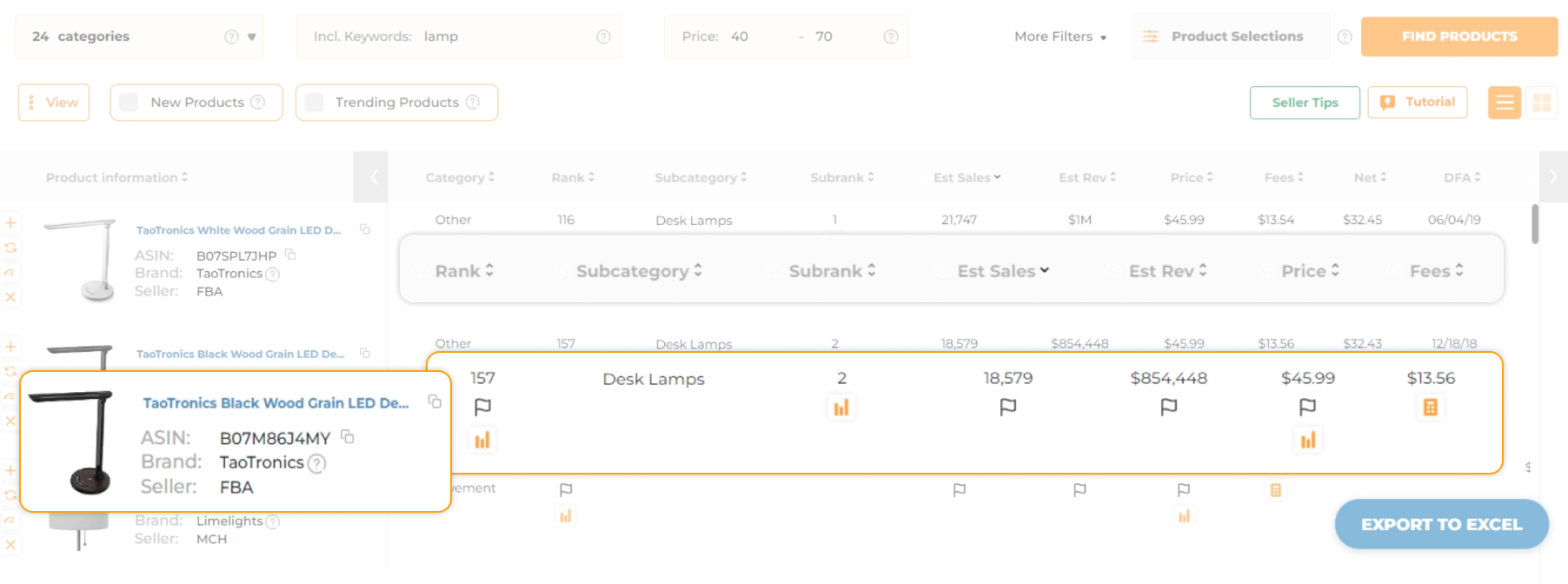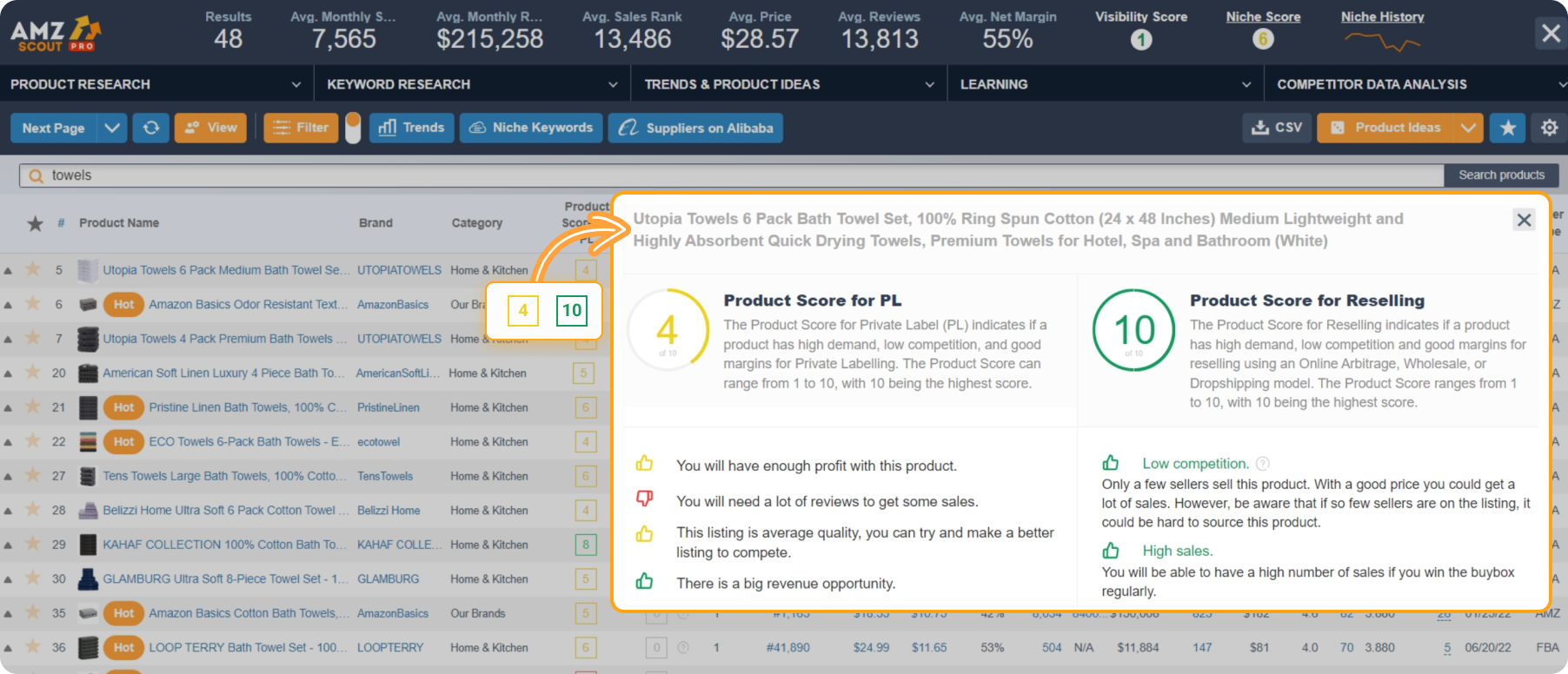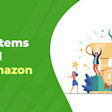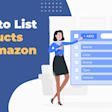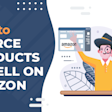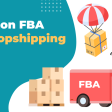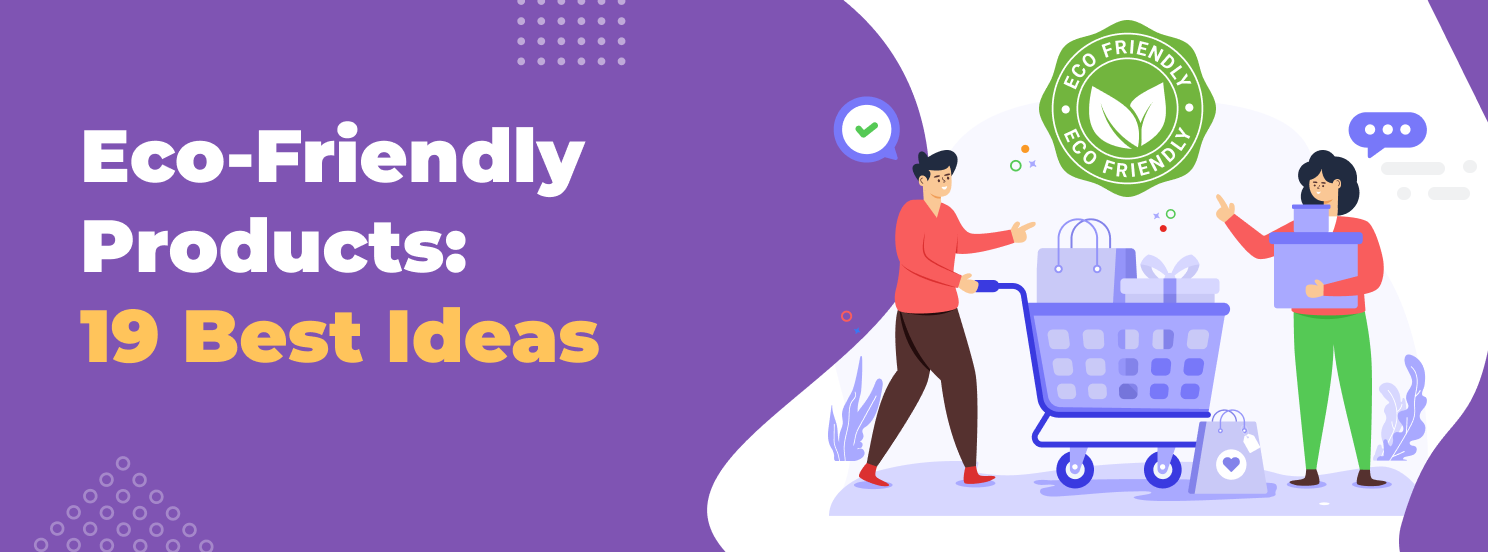
Best Eco-Friendly Products and How to Sell Them
Recent research shows that more consumers are changing their habits to be environmentally friendly. This trend has led to sales of sustainable products growing three times faster than others. Selling eco-friendly products isn't just a trend or an ethical gesture—it's a smart business strategy as well.
In this article, we'll delve into the best eco-friendly products to sell and explore how to choose them wisely.
Table of contents
What Are Eco-Friendly Products?
Eco-friendly products are items designed to reduce environmental impact throughout the entire production chain. From production materials to packaging, from shipping to recycling, everything is designed to ensure that they can be reusable and disposal of these items is intended to be as environmentally friendly as possible.
These products are often made from recycled, biodegradable, and organic materials, and are created by an energy-saving production process. Many companies are becoming increasingly focused on improving their production processes and drastically reducing their impact on the environment, not only to safeguard the health of the planet but also to meet new consumer demands.
Why Should You Consider Selling Eco-Friendly Products?
Selling eco-friendly products is not just a growing trend, but is also a strategic choice that reflects the evolution of market and consumer values. Expanding on the benefits of this business choice allows us to better understand why more and more companies are moving towards an increasingly sustainable approach.
These benefits can be categorized, principally, into four crucial points.
Steady growth in demand: Environmental awareness among consumers is resulting in an increase in demand, due to growing awareness of issues like climate change and pollution. This has led to a preference for products and services that promise minimal environmental damage.
Brand awareness: 84% of customers say that poor environmental practices can alienate them from a brand. Brands' commitment to the environment builds trust and loyalty, while sustainable practices generate positive word-of-mouth, further raising company awareness.
Market differentiation: In a saturated market, offering organic products as a sustainable alternative can differentiate your brand and attract environmentally conscious consumers. By being recognized as a green company and focusing on innovation and sustainability, you can expand your audience and drive sales.
Tax incentives: Governments offer tax incentives for sustainable practices and eco-friendly products, ranging from tax reductions to direct subsidies. These incentives provide economic motivation for companies to prioritize sustainability, as well as recognition and institutional support, which helps to enhance a company's reputation.
Therefore, as we have seen, the sale of eco-friendly products offers great benefits for starting an online business. Ever-growing demand, greater brand loyalty, market differentiation and financial incentives are all advantages that can drive long-term business success in an increasingly eco-conscious consumer landscape.
How to Choose Eco-Friendly Products to Sell
The correct choice of eco-friendly products to sell is therefore crucial in a company's decision-making process.
First, it's necessary to check whether a product is really sustainable. Look for products made from renewable, recycled, or eco-friendly materials. Assess the branded packaging of the product (minimal, recyclable, or biodegradable). Also, check if the product has any certifications or labels indicating its sustainability credentials.
Then we consider identifying various criteria to evaluate the profitability of a product without focusing only on its environmental impact.
Here are the criteria that professional sellers recommend you, follow and some useful tools to help you identify the most profitable assets for our purpose.
High demand: Assess the sales volume. Consistent or growing sales indicate positive interest. Monthly sales numbers above 300 signify strong demand.
Profit margins: Verify if the profit from sales is greater than the required expenses (such as inventory purchase, shipping, and other associated costs). Look for products with margins exceeding 50%.
Uniqueness: Check if the product offers unique value propositions relative to competitors, taking into account aspects such as quality, design, and branding.
Competitor Analysis: Assess the level of competition in the market. A number of 20 sellers or higher indicates fierce competition. If dominant brands prevail, consider other products.
Research indicates that more than 50% of users initiate their product searches on Amazon. With over 300 million items available, this platform serves as an excellent resource for identifying potential product ideas to sell. However, pinpointing goods that meet the specified criteria manually can be time-consuming. Tools like the AMZScout Product Database and AMZScout PRO Extension can simplify your search process greatly and help you find the most profitable, ecological goods to sell.
With AMZScout's Product Database, you can discover eco-friendly product ideas tailored to your criteria. Here's a quick guide on what steps to follow:
1. Go to the AMZScout Product Database. Enter your email address to start a free trial (no credit card details needed).
2. Enter a product-related phrase. In the "Incl. Keywords" bar, you can type something like "eco-friendly".
3. Apply search filters. You can narrow down your search by specifying criteria to sort products. There are 16 parameters. The most common parameters that professional sellers recommend to help you identify a profitable product idea are:
Category: Select the category you’re interested in, from among 24 categories.
Estimated Sales: Make sure that the monthly product sales exceed 300 sales per month to ensure high demand.
Rating: Choose products with ratings of at least 4 to ensure customer satisfaction with the product.
Reviews: A higher number of reviews indicates customer satisfaction with the product. Look for products with over 100 reviews.
Trending Products: The tool will display items that have experienced a 20% increase in sales in the past one to three months.
4. Get your results. Click “Find Products” to display items that meet your specified criteria. The data will include statistics across 16 parameters, such as number of sellers, monthly sales volume, net margin, listing quality score, and more.
After obtaining a list of items, it's essential to analyze them further to ensure both demand stability and profitability. With the AMZScout PRO Extension, you always have a detailed analysis of the performance of the best sustainable products to sell right at your fingertips.
Simply follow these steps:
1. Install the AMZScout PRO Extension for Chrome.
2. Browse for product ideas. Enter the product name into the search field on Amazon.
3. Access the AMZScout PRO Extension. Just click on the AMZScout icon located in the upper corner of your browser.
4. Analyze the sales data. Within the open window, you can review statistics about each product in the niche, such as estimated monthly revenue, FBA fees, rank, net margin, and more. There's also an additional unique feature: by clicking on Product Score for Private Label or Product Score for Retail, you can access a detailed explanation of which business model is suitable for the product.
5. Review the product's sales volume.
Select Product History under your item of interest to delve deeper. There, you'll find graphics representing three parameters—sales, rank, and price—showing how these criteria have changed for the product over a specific period of time.
Review the Sales and Price graphics, which depict the number of sales and the product price, respectively. Determine if the product maintains a stable or increasing sales trend and avoids significant price fluctuations.
6. Calculate profitability. Click Profit Calculator under any product in the niche to check your estimated monthly sales and net margin after all costs and expenses associated with the product.
These tools, used simultaneously, will radically change the way you develop your business, allowing you to save time, analyze the market for environmentally friendly products, and maximize your earning potential right away.
The Best Ideas for Eco-Friendly Products to Sell
After developing a strategy for selecting the most profitable sustainable products to sell for your business, now we’ll take a look at some product examples. We've chosen four of the most trending market segments to focus on. For certain products within these segments, we'll evaluate their sales performance on Amazon to determine their effectiveness in the market.
1. Household Products
Home products are undoubtedly one of the first market segments to be carefully analyzed. Here are some of the best product ideas to help you start developing an eco-friendly online business.
Biodegradable detergents
Reusable water bottles
Organic material bags
Plastic-free cleaning products
Eco-friendly kitchen utensils
2. Eco-Friendly Cosmetics and Beauty Products
Organic or chemical-free items are increasingly in demand among consumers. The focus on environmental impact and sustainability goes hand-in-hand with a focus on the quality of ingredients and the INCIs of products.
Here are some examples of these types of products:
Organic bath bombs
Natural baby care products
Chemical-free shampoos
Bamboo or wooden hair combs
Non-plastic toothbrushes
3. Green Technology
With technological advancements, consumers are actively seeking solutions that tackle environmental challenges and foster sustainability. Sellers must prioritize green technology products as they represent a significant market opportunity.
Here's a list of examples of these kinds of products:
Energy-efficient office LED desk lamps
Tech equipment made from environmentally friendly materials
Solar-powered gadgets
Rechargeable batteries
Electric travel bikes
4. Sustainable Fashion
It is well-known that the fast-fashion sector is one of the world’s most prevalent sources of pollution. On the other hand, there's a growing trend towards compulsive buying and limited reuse of inexpensive products. Therefore, by offering sustainable fashion, we can differentiate ourselves from competitors and tap into a highly promising market niche for the future.
Examples of these kinds of goods include:
Garments made from organic materials
Clothes with an ecologically sustainable production chain
Items made with vegan leather
With the help of AMZScout tools, thorough exploration of this sector can unveil emerging trends and facilitate the discovery of trustworthy wholesale suppliers.
Conclusion
Selling environmentally friendly products is a wise choice for launching an ethical and profitable online business, aligning with global sustainability trends and consumer perceptions. With support from tools like AMZScout, making informed decisions ensures that you’ll have the best selection of both green and profitable goods in store. Opting to sell eco-friendly products is an investment in a greener future and sustainable business success.

